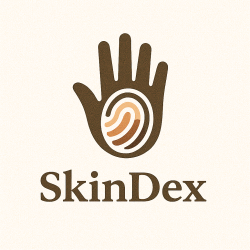What is a keloid?
Say you have a tiny scar on your skin, hoping it would eventually fade away over time—only to realize it’s expanding instead. What starts as a tiny bump becomes hard, raised, and sometimes sore or itchy skin. It even becomes bigger than the initial wound, as if your skin doesn’t know when to stop healing. This is what it feels like to have a keloid scar, one of several scars that occur to millions of individuals and seem to attack at random or without a clear reason! This article explores the science behind keloids and the risks of cosmetic procedures if you have a darker skin tone.
What causes a keloid?
When the body’s healing mechanism just goes a bit too far, a keloid occurs. Your skin would otherwise start healing by producing collagen, which helps to mend injured tissue, after a cut, piercing, acne infection, or even a bug bite. The body normally gets the message to stop after the cut has healed. That “stop” signal isn’t answered with keloids, though. Fibroblasts just keep on producing collagen, and what comes out is a thick, raised scar that goes beyond the original wound. These tend to be tender or itchy, and they’re typically rubbery and shiny in texture. In addition, they barely ever seem to go away by themselves.
Some individuals are more likely to develop keloids than others, but no one is immune. You are much more likely to have keloids if you have darker skin, particularly if you are Middle Eastern, African, Hispanic, or Asian. Caucasians are significantly less likely to develop keloids, whereas 16% of highly darkly melanated people might develop them.
Why is this?
Well, genetics come into play. Some genes involved in inflammation and collagen synthesis have been demonstrated to increase keloid predisposition, possibly familial in nature. Skin biology is involved as well. Melanin itself does not directly contribute to keloids, but darker skin types have a thicker dermis, increased fibroblast activity, and heightened inflammatory response after injury. These differences may be the reason that keloids are most frequently found, especially in the skin around the earlobes, jaw, shoulders, and chest. Tugging tight over a wound, age, and hormones also play a role.
But biology is just half of it. Medical education and studies have long ignored keloids, especially when they appear on skin of color. It may be harder for some doctors to diagnose keloids in darker-skinned individuals since most reference images and textbooks contain mostly lighter skin. This disparity leads to treatments not being specific to other colors, a lower chance of their prevention, and delayed diagnosis.
That keloids are generally preventable—if the risk is caught early enough—is especially disquieting. The danger of keloid can be reduced by taking simple steps such as using silicone gel sheets, receiving steroid injections, or using pressure earrings following piercing. Choosing non-surgical cosmetic treatments is also advantageous. But if your practitioner does not know about your risk factor, he or she will not alert you. And that might make you surprised when a little scar becomes larger.
Takeaway
In all, learning about keloids isn’t just about scars—it’s about recognizing and respecting all skin types. Everyone and their unique skin tone deserves to be seen, supported, and given care that reflects their skin’s unique needs. So if you have darker skin and are thinking about a piercing, surgery, or cosmetic treatment, don’t hesitate to ask about keloid risk.
References
- Marneros, Alexander G., and John J. Uitto. Keloids and Hypertrophic Scars. StatPearls Publishing, 2024. NCBI Bookshelf, https://www.ncbi.nlm.nih.gov/books/NBK507899/.
- American Academy of Dermatology Association. “Keloids: Causes.” AAD, https://www.aad.org/public/diseases/a-z/keloids-causes.
- Draelos, Zoe Diana. “Dermatological Conditions in Skin of Color: Managing Keloids.” Journal of Clinical and Aesthetic Dermatology, 2021, https://jcadonline.com/dermatological-conditions-in-skin-of-color-managing-keloids/.
- Ogawa, Rei. “The Pathogenesis of Keloids.” Plastic Surgery Key, 2015, https://plasticsurgerykey.com/the-pathogenesis-of-keloids/.

